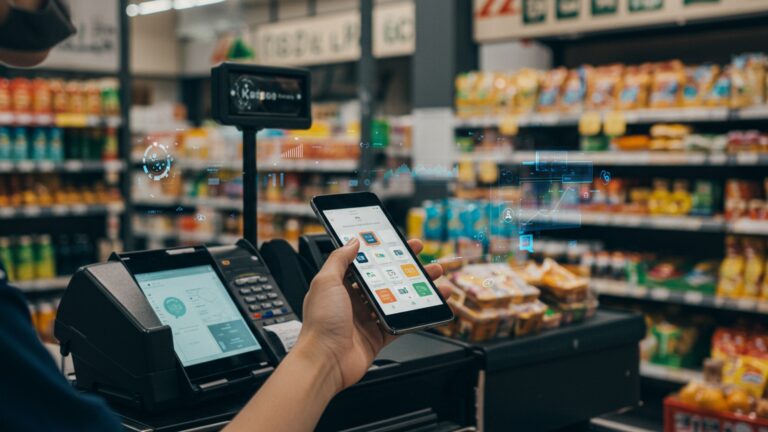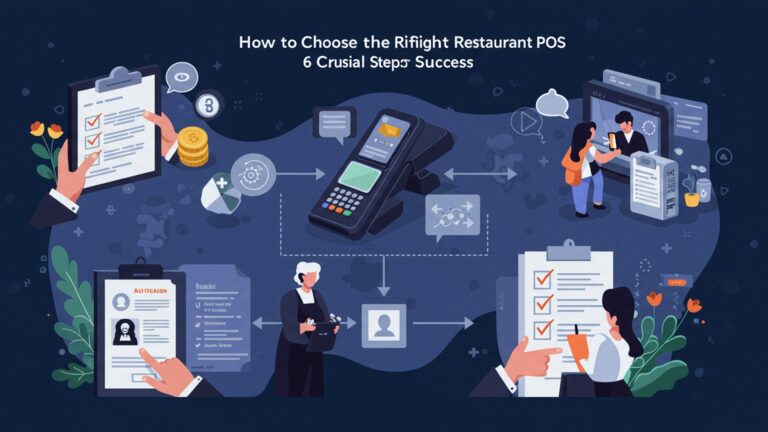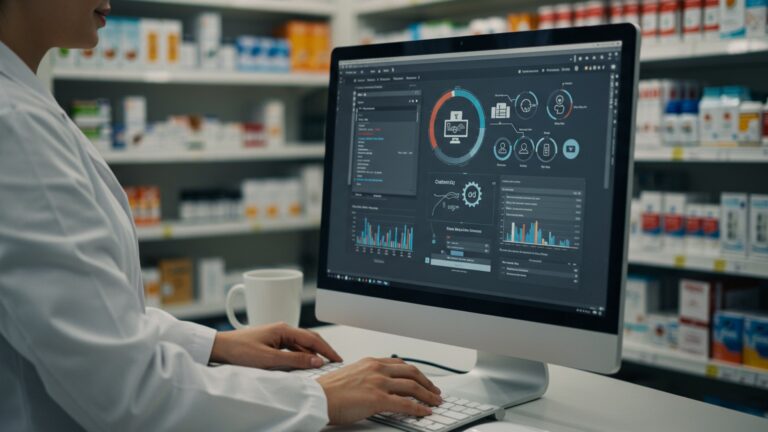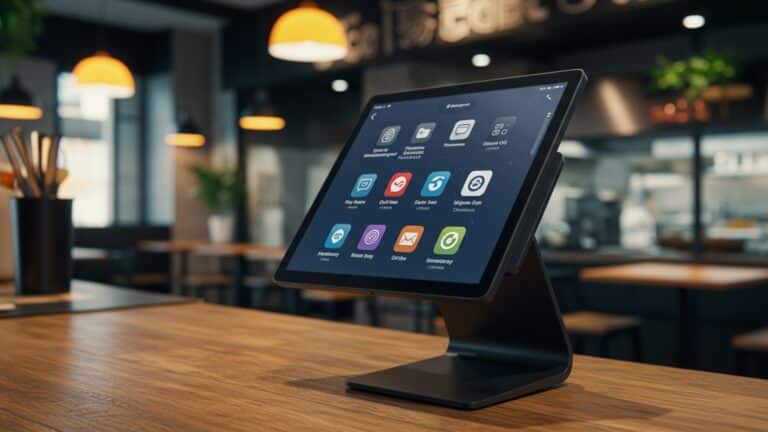7 Essential Benefits of a Pharmacy POS System for Your Business Growth
In today’s rapidly evolving healthcare landscape, pharmacies face escalating operational complexities, from intricate inventory management to increasing patient expectations for personalized care and integrated services. A robust pharmacy POS system transcends basic transaction processing, emerging as an indispensable technological backbone for modern drugstores. It actively streamlines prescription fulfillment, automates precise inventory tracking, manages patient loyalty programs. provides invaluable sales analytics, allowing pharmacists to dedicate more time to clinical services. Embracing such a system empowers businesses to reduce costly errors, enhance patient engagement through efficient service. gain a significant competitive edge by optimizing every facet of their daily operations, directly fueling sustainable growth.
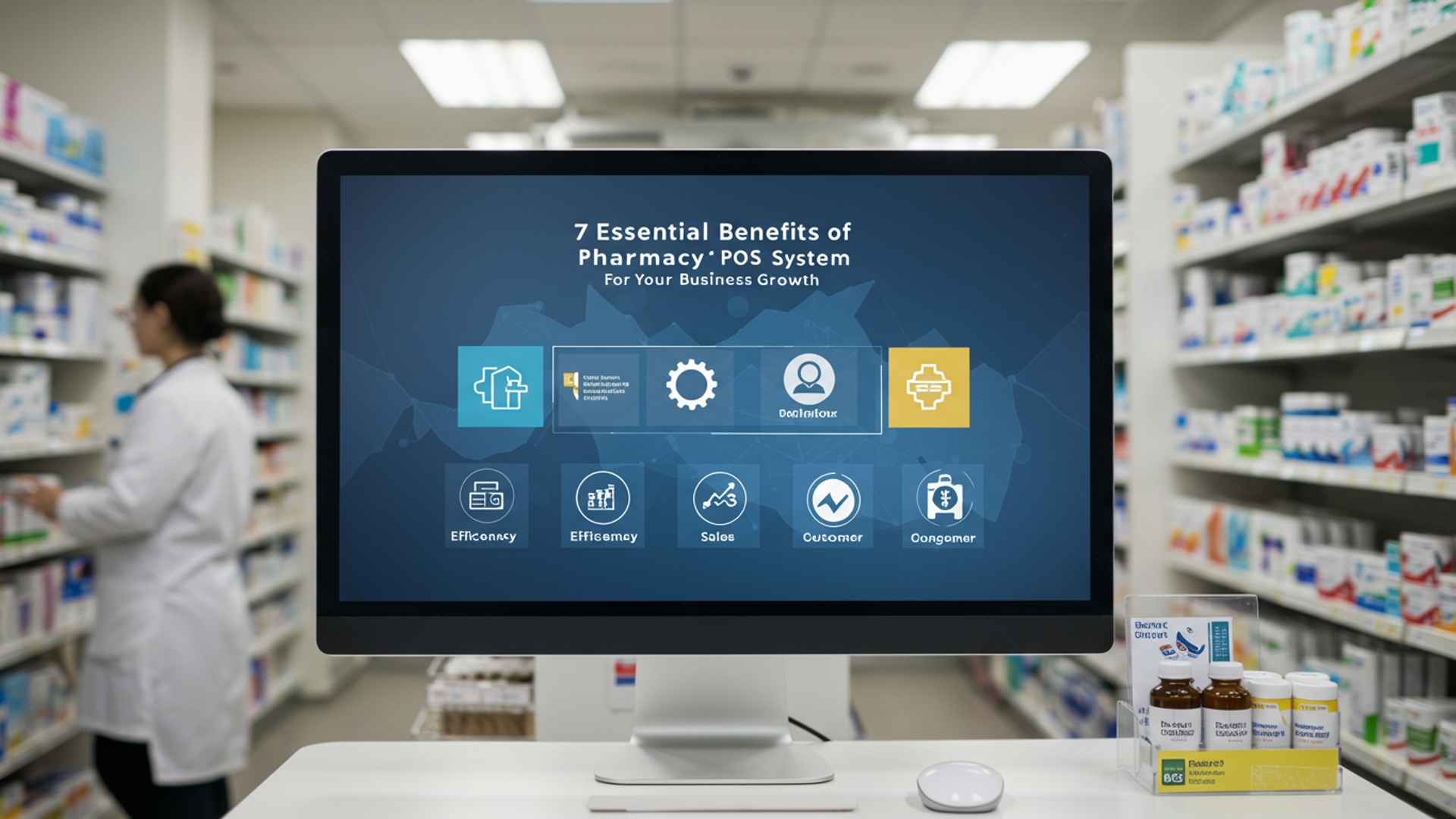
Understanding the Core of a Pharmacy POS System
In today’s rapidly evolving healthcare landscape, pharmacies face unique operational challenges, from managing diverse inventories of prescription and over-the-counter (OTC) medications to ensuring strict regulatory compliance and providing exceptional patient care. A pharmacy POS system, or Point of Sale system, is far more than just a cash register; it’s an integrated software and hardware solution designed specifically to meet these complex demands. At its heart, a POS system for pharmacies centralizes critical business functions, handling everything from sales transactions and inventory tracking to patient management and regulatory reporting. Unlike generic retail POS systems, a specialized pharmacy POS system incorporates features essential for healthcare providers, such as prescription management, insurance billing. adherence programs, making it an indispensable tool for growth and efficiency.
1. Enhanced Inventory Management and Control
Effective inventory management is paramount for any pharmacy. It directly impacts profitability, patient safety. operational efficiency. A robust pharmacy POS system revolutionizes how pharmacies handle their stock, moving beyond manual counts and disparate spreadsheets to a fully automated, real-time approach.
-
- Real-time Tracking and Automation
Modern pharmacy POS systems offer perpetual inventory tracking. Every sale, return, or new delivery is automatically recorded, providing an accurate, up-to-the-minute view of stock levels. This eliminates guesswork and significantly reduces human error. For instance, when a prescription for a specific medication, say ‘Amoxicillin 500mg,’ is dispensed, the system instantly deducts that quantity from inventory. This automation extends to setting reorder points, triggering alerts when stock falls below a predefined threshold, ensuring popular medications are always available.
-
- Expiration Date Management
Medications have strict expiration dates. dispensing expired drugs can have severe consequences for patient health and lead to regulatory penalties. A pharmacy POS system can track expiration dates for each batch of medication, notifying staff well in advance when products are approaching expiry. This allows pharmacies to implement “first-in, first-out” (FIFO) strategies more effectively and minimize waste from expired stock. Consider a scenario where a pharmacy used to manually check expiration dates monthly, often missing items. With a POS system, alerts are automatically generated 90 days out, allowing time for promotions or returns to suppliers, significantly reducing write-offs.
-
- Optimized Ordering
By analyzing sales data and inventory turnover rates, the system can provide data-driven insights for smarter purchasing decisions. It identifies fast-moving items, slow-moving products. seasonal trends, helping pharmacists optimize order quantities and schedules with wholesalers. This reduces carrying costs associated with overstocking and prevents lost sales due to stockouts.
2. Streamlined Prescription Processing and Dispensing
The core of a pharmacy’s service is prescription processing. A specialized pharmacy POS system significantly enhances the speed, accuracy. safety of this critical function, integrating seamlessly with other essential healthcare IT components.
-
- Integration with E-Prescribing (eRx) and Electronic Health Records (EHR)
Many advanced pharmacy POS systems integrate directly with e-prescribing platforms and Electronic Health Records (EHR) systems used by physicians. This allows prescriptions to be electronically transmitted directly from the prescriber’s office to the pharmacy, eliminating errors associated with handwritten prescriptions and reducing processing time. This integration also provides pharmacists immediate access to patient medication histories, allergies. other vital health data, improving medication therapy management and patient safety.
-
- Automated Workflow and Verification
From receiving the prescription to dispensing, the system guides pharmacists through a structured workflow. It can perform automated checks for drug-drug interactions, drug-allergy interactions. dosage appropriateness against patient profiles. For instance, if a patient is prescribed two medications that are known to interact negatively, the system will flag it immediately, prompting the pharmacist to review and consult with the prescribing physician. This proactive approach significantly reduces dispensing errors, a common cause of patient harm.
-
- Insurance Billing and Adjudication
Complex insurance claims can be a major bottleneck. A pharmacy POS system automates insurance billing, sending claims electronically to Pharmacy Benefit Managers (PBMs) for real-time adjudication. This means pharmacists and patients receive immediate confirmation of coverage and co-pay amounts, speeding up the checkout process and minimizing claim rejections. This feature is particularly beneficial for managing complex plans and prior authorizations efficiently.
3. Improved Customer Experience and Loyalty
In an increasingly competitive market, fostering customer loyalty is crucial for growth. A pharmacy POS system plays a pivotal role in enhancing the patient experience, turning one-time customers into loyal patrons.
-
- Faster and More Accurate Checkouts
Long queues can deter customers. A modern pharmacy POS system accelerates transactions by quickly scanning items, processing payments (including various forms like credit cards, mobile payments. FSA/HSA cards). automating insurance claims. This efficiency reduces wait times, making the patient’s visit smoother and more pleasant.
-
- Personalized Patient Care
The system stores comprehensive patient profiles, including medication history, allergies, preferred communication methods. past purchases (both prescription and OTC). This data empowers pharmacists to offer personalized advice, identify potential medication adherence issues. recommend relevant OTC products. For example, if a patient regularly purchases allergy medication, the pharmacist can proactively suggest seasonal flu shots or relevant lifestyle tips. This level of personalized interaction builds trust and strengthens the pharmacist-patient relationship.
-
- Loyalty Programs and Targeted Promotions
Many pharmacy POS systems include integrated loyalty program functionalities. Pharmacies can reward frequent customers with points, discounts, or special offers based on their purchase history. By analyzing sales data, the system can also identify customer segments for targeted promotions, such as discounts on diabetic supplies for patients with diabetes, or bundled offers for cold and flu season. This not only encourages repeat business but also demonstrates that the pharmacy understands and values its customers.
4. Robust Financial Reporting and Analytics
Understanding the financial health of your pharmacy is critical for making informed business decisions. A pharmacy POS system provides sophisticated reporting and analytics capabilities that transform raw transactional data into actionable insights.
-
- Comprehensive Sales Data
The system meticulously records every sale, providing detailed reports on sales volumes, revenue generated, profit margins. average transaction values. These reports can be broken down by product category, time of day, staff member, or even specific suppliers. This allows pharmacy owners to identify peak sales periods, best-selling products. underperforming areas.
-
- Performance Dashboards
Many systems offer customizable dashboards that present key performance indicators (KPIs) at a glance. These might include daily sales, inventory turnover rate, average prescription fill time, or customer loyalty program engagement. A pharmacy owner can quickly assess the pulse of their business without sifting through voluminous reports.
-
- Strategic Business Planning
With access to historical data and trend analysis, pharmacies can make more accurate forecasts for inventory needs, staffing levels. marketing campaigns. For instance, if analytics show a consistent spike in cold and flu medication sales during specific months, the pharmacy can proactively stock up and plan promotional activities. This data-driven approach moves business planning from reactive to proactive, ensuring resources are allocated effectively for growth.
5. Better Regulatory Compliance and Security
Pharmacies operate under a stringent regulatory framework, including HIPAA for patient privacy, DEA regulations for controlled substances. various state pharmacy board rules. A pharmacy POS system is engineered to help pharmacies meet these complex requirements, reducing the risk of fines and legal issues.
-
- HIPAA Compliance
Patient health insights (PHI) is highly sensitive. A robust pharmacy POS system employs advanced security measures, including encryption, access controls. audit trails, to protect patient data in accordance with HIPAA regulations. Only authorized personnel can access specific levels of patient details. all interactions with patient records are logged.
-
- Controlled Substance Tracking
Managing controlled substances requires meticulous record-keeping. The POS system can automate the tracking of Schedule II-V medications, from receipt to dispensing, ensuring accurate counts and generating necessary reports for regulatory bodies like the DEA. This significantly reduces the potential for diversion and ensures compliance with strict reporting requirements.
-
- Audit Trails and Reporting
Every action taken within the system – a prescription filled, an inventory adjustment, a price change – is timestamped and attributed to a specific user. This comprehensive audit trail is invaluable during regulatory inspections or in resolving discrepancies, providing an indisputable record of operations.
| Feature | Manual Compliance | Pharmacy POS System Compliance |
|---|---|---|
| HIPAA Data Security | Paper records vulnerable to theft/misplacement; limited access control. | Encrypted data, role-based access, audit trails, secure servers. |
| Controlled Substance Tracking | Handwritten logs, prone to errors, time-consuming reconciliation. | Automated real-time tracking, digital logs, easy reporting to DEA. |
| Audit Trails | Difficult to trace actions, inconsistent record-keeping. | Every action logged with user ID and timestamp, comprehensive. |
| Prescription Verification | Manual checks for interactions, potential for human oversight. | Automated drug interaction, allergy, dosage checks. |
6. Increased Operational Efficiency and Staff Productivity
Time is a precious commodity in any business, especially in a busy pharmacy. A pharmacy POS system dramatically improves operational efficiency by automating routine tasks, reducing manual errors. freeing up staff for more critical, patient-focused activities.
-
- Automation of Routine Tasks
Tasks such as inventory updates, price changes, insurance claim submissions. sales reporting, which would otherwise consume significant staff time, are automated by the POS system. This automation minimizes the need for manual data entry, reducing the likelihood of errors and speeding up processes.
-
- Reduced Manual Errors
Human error is inevitable with manual processes. A POS system standardizes workflows, provides prompts. performs automated checks, significantly reducing mistakes in dispensing, pricing. data entry. For example, a common issue like incorrect pricing is virtually eliminated as the system pulls current prices directly from its database.
-
- Empowering Staff for Patient Care
By streamlining administrative and transactional duties, pharmacists and technicians are freed from mundane tasks. This allows them to dedicate more time to counseling patients, performing medication therapy reviews, administering immunizations. developing deeper relationships with their community. This shift from transactional to clinical focus not only improves patient outcomes but also enhances job satisfaction for pharmacy staff. A pharmacist in a busy urban pharmacy, for instance, reported reducing time spent on inventory reconciliation by 50% after implementing a new POS system, allowing them to initiate a new patient education program on chronic disease management.
7. Seamless Integration with Other Systems
The true power of a modern pharmacy POS system lies in its ability to integrate with a wide ecosystem of other essential software and services, creating a unified and highly efficient operational environment.
-
- Wholesaler Integration
Many pharmacy POS systems can integrate directly with medication wholesalers. This allows for automated order placement based on reorder points, real-time price comparisons between different suppliers. electronic invoice reconciliation. This significantly streamlines the purchasing process, ensures competitive pricing. reduces administrative overhead.
-
- Accounting Software Integration
Integrating with accounting software (like QuickBooks or Xero) eliminates the need for manual data entry of sales, expenses. inventory values into separate accounting systems. This ensures financial records are always up-to-date and accurate, simplifying bookkeeping, tax preparation. financial analysis.
-
- Payment Processors
Modern POS systems integrate seamlessly with various payment processors, enabling secure and efficient handling of credit cards, debit cards, mobile payments. other digital transaction methods. This not only speeds up checkout but also enhances security by reducing the handling of cash and providing encrypted payment processing.
-
- EHR/EMR and PBM Integration (revisited)
Beyond basic e-prescribing, deeper integration with Electronic Health Records (EHR) or Electronic Medical Records (EMR) systems allows for a comprehensive view of patient health, fostering better coordinated care. Integration with Pharmacy Benefit Managers (PBMs) ensures real-time claims processing, benefit verification. access to patient-specific formularies, further optimizing the financial aspects of prescription dispensing.
A fully integrated pharmacy ecosystem looks like this:
[EHR/EMR] <---> [Pharmacy POS System] <---> [PBMs] ^ | ^ | | | | V | [Physician] [Wholesalers] [Payment Processors] | | V V [Accounting Software] This diagram illustrates how data flows seamlessly between different components, eliminating silos and enhancing overall operational fluidity.
Conclusion
Embracing a modern pharmacy POS system isn’t just an upgrade; it’s a strategic imperative for sustainable growth in today’s evolving healthcare landscape. By integrating features like real-time inventory management and robust patient profiling, you transform your operations from reactive to proactive, ensuring essential medicines are always in stock and patient needs are met efficiently. My personal observation from working with numerous pharmacies is that the most impactful change comes from freeing up your pharmacists to focus on value-added patient consultations, rather than getting bogged down in manual administrative tasks. This crucial shift not only boosts revenue but profoundly enhances patient trust and loyalty, vital in a competitive market. Consider the recent emphasis on digital health records and seamless prescription processing; a capable POS system is your foundational technology for navigating these trends successfully and ensuring GST compliance. Investing in such a system isn’t merely about buying software; it’s about empowering your business to adapt, innovate. thrive. Take this crucial step to elevate your pharmacy’s efficiency, compliance. overall patient experience, securing its place as a cornerstone of community health. For a deeper dive into specific functionalities, explore 7 Key Features Your Pharmacy POS System Must Have.
More Articles
7 Key Factors Impacting Pharmacy POS System Price You Must Know
Discover 7 Essential Benefits of a Modern Pharmacy POS System Guide
Learn 7 Key Features Your Pharmacy POS System Must Have
7 Essential Features Your POS Billing Software Needs for GST Compliance
How to Choose and Use a POS System for Inventory Management in India
FAQs
How can a pharmacy POS system help me keep better track of all my products?
It automates inventory tracking, giving you real-time updates on what’s in stock, what’s selling well. what you need to reorder. This means fewer stockouts, less waste from expired items. better management of your crucial medications.
Will a POS system really make my checkout process faster for customers?
Absolutely! With features like quick barcode scanning, integrated payment processing. streamlined transaction flows, your staff can check out customers much more efficiently. This reduces wait times, boosts customer satisfaction. frees up your team to focus on patient care.
How does this system help me build stronger relationships and loyalty with my patients?
A good pharmacy POS can track customer purchase history, manage loyalty programs. even store patient preferences. This allows you to offer personalized service, targeted promotions. create a base of returning, happy customers who feel valued.
What kind of useful data or insights can I get from a pharmacy POS?
It provides valuable reports on sales trends, popular products, employee performance. profit margins. These insights are super helpful for making smarter business decisions, optimizing your product offerings. identifying new opportunities for growth.
Can a POS system help reduce mistakes and improve accuracy in my pharmacy?
Definitely. By automating tasks like pricing, inventory updates. integrating with prescription management systems, it significantly minimizes manual data entry errors. This leads to more accurate transactions, correct pricing. safer patient interactions.
Does a pharmacy POS system help me stay compliant with all the necessary rules and regulations?
Yes, many systems are designed with pharmacy-specific regulations in mind. They can assist with tracking controlled substances, managing patient data securely (like HIPAA compliance). generating necessary reports for audits, helping you avoid potential penalties.
My business is growing; can a POS system keep up with that growth?
Most modern pharmacy POS systems are built to be scalable. As your business expands, adds new services, or even opens new locations, the system can adapt and grow with you, ensuring smooth operations without needing a complete overhaul.


